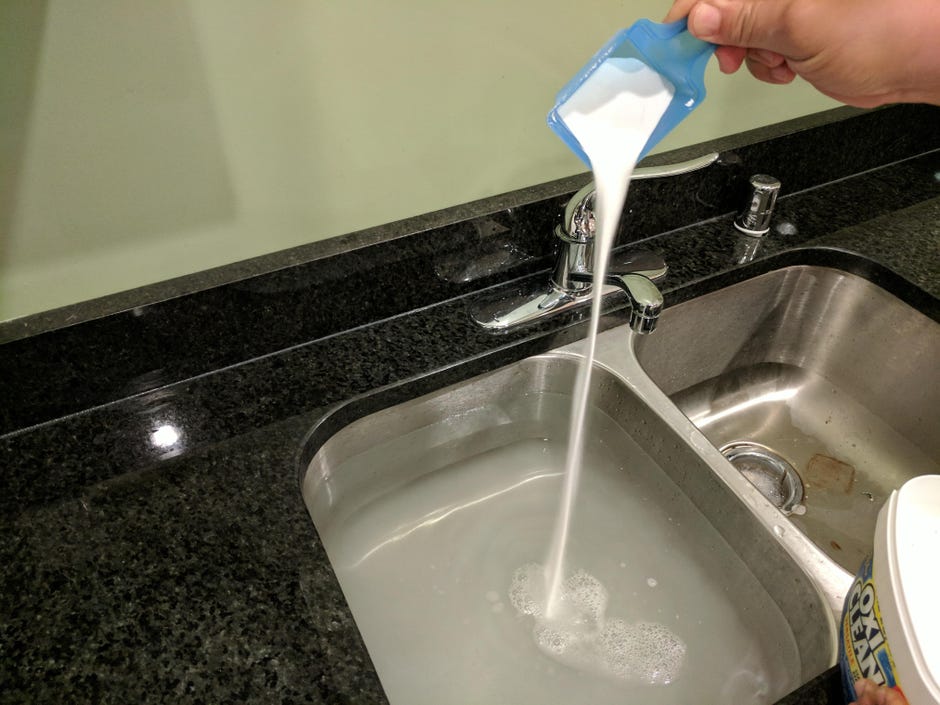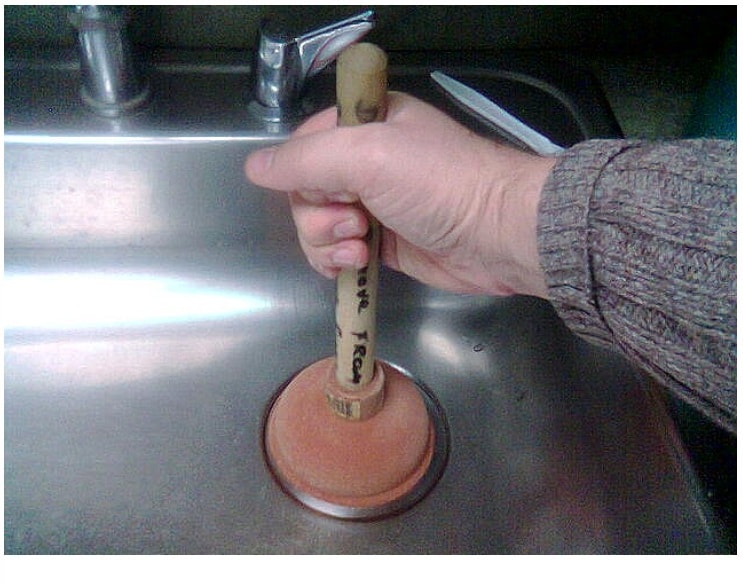Decoding Drain Delays - 6 Reasons Your Kitchen Sink Hesitates
Decoding Drain Delays - 6 Reasons Your Kitchen Sink Hesitates
Blog Article
They are making a few good annotation on the subject of Why Is My Sink Not Draining? overall in this post further down.

It's not typical for your cooking area sink to clog up multiple times in one month. If your sink blocks two times a week, there's some trouble taking place.
An obstructed kitchen drainpipe does not just decrease your jobs, it degrades your whole plumbing system, gradually. Here are some typical routines that urge sink clogs, and exactly how to prevent them.
You require correct garbage disposal
Recycling waste is terrific, but do you take note of your natural waste as well? Your cooking area needs to have two separate waste boxes; one for recyclable plastics and one more for natural waste, which can end up being garden compost.
Having actually a marked trash can will help you and your household prevent throwing pasta as well as various other food residues down the tubes. Normally, these residues soak up dampness and also come to be obstructions.
The mistake isn't from your kitchen area sink in any way
Perhaps the problem isn't from your kitchen sink, but the whole water drainage system. In such an instance, you might see that sinks and also drains pipes obtain blocked every other week. You require an expert plumbing service to fix this.
You're throwing coffee down the drain
Used coffee grounds and also coffee beans still soak up a substantial quantity of dampness. They might seem tiny adequate to throw down the drainpipe, however as time goes on they start to swell as well as use up more space.
Your coffee grounds need to enter into natural waste disposal. Whatever fraction escapes (perhaps while you're depleting) will certainly be dealt with during your monthly cleanup.
You have actually been consuming a lot of greasy foods
Your cooking area sink might still get blocked even with natural waste disposal. This may be because you have a diet regimen abundant in greasy foods like cheeseburgers.
This oil layers the insides of pipes, making them narrower and also even more clog-prone.
Utilize a plunger
Your pipeline wasn't fixed effectively to begin with
If you've been doing none of the above, but still obtain routine clogs in your cooking area sink, you should call a plumber. There might be a problem with just how your pipes were mounted.
While your plumber shows up, check for any kind of leakages or irregularities around your cooking area pipes. Don't try to repair the pipelines on your own. This may create a mishap or a kitchen flooding.
Someone attempted to wash their hair in the kitchen sink
There's a correct time and area for whatever. The cooking area sink is just not the appropriate place to clean your hair. Cleaning your hair in the kitchen sink will certainly make it obstruct one way or another unless you utilize a drainpipe catcher.
While a drain catcher could catch the majority of the results, some strands might still get through. If you have thick hair, this may suffice to slow down your drain and ultimately create a clog.
There's more dust than your pipes can deal with
If you obtain fruits directly from a farm, you might notice more kitchen area dirt than other people that go shopping from a shopping mall. You can easily fix this by cleansing the fruits and veggies correctly prior to bringing them right into the house.You need correct garbage disposal
My Kitchen Sink Won’t Drain - What Should I Do?
If Your Sink Has a Garbage Disposal...
Turn on the disposal. If the disposal hums and doesn’t turn, then there’s clog in the disposal unit.
Go to your circuit breaker panel, and switch off the circuit breaker to your garbage disposal.
Back in your kitchen, double-check that your garbage disposal is off by trying to turn it on. The disposal should not move, and it should not make any noise.
Lie down underneath your sink so that you can see and access the bottom of the disposal unit. Look for a hole that looks like the head of a hex-head bolt in the center of the unit.
Place an Allen wrench inside this hole and turn it from side to side until you feel a decrease in resistance and are able to rotate the wrench completely in a single direction. This action rotates your disposal’s blade manually.
Put the wrench aside, and press the disposal unit’s reset button or switch.
Flip your garbage disposal’s circuit breaker switch back on, and turn on the unit to see if the obstruction has cleared. If it hasn’t, repeat the steps above until the obstruction is removed.
How to Unclog a Kitchen Sink Drain
If you have a double bowl sink, seal one side of the sink with an airtight lid or a second plunger before plunging the other side. Otherwise, you won’t be able to create adequate suction.
Place the cup of the plunger completely over the drain opening.
Turn on the faucet, and let the water run until it completely covers the cup of the plunger.
Start plunging by pushing the plunger down and pulling up again in order to build up suction. Make sure that the edges of the plunger stay in contact with your sink, or else you’ll lose the suction.
If you have trouble forming a seal between your sink and plunger, add petroleum jelly to the mouth of your plunger, and try again.
Plunge about five or six times before removing the plunger to see if water starts to drain properly. In some cases, you’ll even be able to feel the clog become dislodged while you plunge because suddenly there will be much less resistance. Repeat the plunging process until the clog clears.
Once water is draining properly again, run hot water down the drain for 5 minutes to help clear away grease, grime, and debris from the clog. https://www.plumbingjoint.com/blog/2019/august/my-kitchen-sink-won-t-drain-what-should-i-do-/

My Kitchen Sink Won’t Drain - What Should I Do?
If Your Sink Has a Garbage Disposal...
How to Unclog a Kitchen Sink Drain
https://www.plumbingjoint.com/blog/2019/august/my-kitchen-sink-won-t-drain-what-should-i-do-/
Do you really like reading up on Five Ways to Fix a Slow Sink Drain? Leave a remark below. We would be interested to find out your opinion about this blog post. We hope to see you back again before long. Do you know about another individual who is sincerely interested in Why Is My Sink Not Draining?? Why not share it. We love reading our article about Five Ways to Fix a Slow Sink Drain.
Check This Out
Report this page